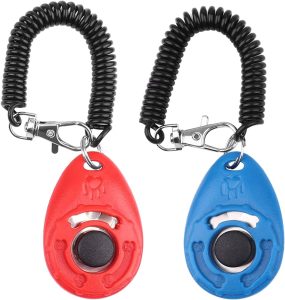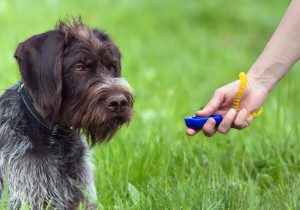Kickstarting Clicker Training: A Simple Guide for Bird Dogs
Training your bird dog can be a rewarding task for both the dog and the owner, and one effective method of training is clicker training. This method leverages the principles of operant conditioning, using a unique sound, such as a ‘click,’ to signal that the dog has done something right. This article will delve into the basics of clicker training, how to prepare your bird dog for clicker training, and implementing and evaluating the training techniques.
Understanding the Basics of Clicker Training
Clicker training is a type of positive reinforcement training that involves the use of a small handheld device that produces a distinct clicking sound. The click serves as a clear, consistent signal to the dog that they’ve performed the proper behavior, and a reward is imminent. This method of training takes advantage of a dog’s natural ability to associate sounds with actions and consequences. The purpose of the click is not to command or instruct the dog, but to mark the exact moment the desired behavior occurs.

The key to successful clicker training is timing. Clicking too early or too late can confuse your dog and prolong the training process. The click should always immediately follow the desired behavior. In the beginning, every correct behavior should be marked with a click, and immediately followed by a reward. This could be a treat, a toy, or simply affection.
As the dog becomes more familiar with the process, you can reduce the frequency of the clicks and rewards, but always keep the two paired. The click is a promise of a reward, and failing to follow through can weaken or break the association your dog has built between the click and the reward.
Preparing Your Bird Dog for Clicker Training
Preparing your dog for clicker training is a crucial step in the process. Start by choosing a quiet, distraction-free environment. It’s ideal if your dog is hungry before training because this increases the value of the reward. Also, ensure your dog is alert and ready to engage.
Introduce the clicker by clicking and immediately offering your dog a treat. Repeat this a few times, allowing your dog to build an association between the sound and the reward. This is known as “charging” the clicker. Be patient during this process, as it may take some time for your dog to make the connection.
Once your dog has associated the clicker sound with a reward, you’re ready to move on to teaching specific behaviors. Start with simple commands such as “sit” or “stay.” Remember, the click should always immediately follow the desired behavior.

Implementing Clicker Training Techniques for Your Bird Dog
The first technique to implement is simple: click and treat. Click the clicker and give your dog a treat, regardless of what they’re doing. This helps establish the connection between the click and reward. Perform this exercise several times until your dog looks to you for a treat after hearing the click.
Next, start training your dog to perform specific actions. For instance, command your dog to “sit.” The moment they sit, click and reward them. If your dog doesn’t follow your command, don’t click or reward them. Repeat this process until your dog reliably follows the command.
Gradually, introduce more complex commands like “fetch” or “heel.” Remember, always click at the exact moment the desired behavior is performed, followed by the reward. Consistency is vital for success in clicker training.
Evaluating the Progress of Your Bird Dog’s Clicker Training
Assessing your bird dog’s progress is essential to ensure the effectiveness of the clicker training. Keep in mind that progress may be slow at first, but don’t get discouraged. Every dog learns at their own pace.

If your dog isn’t responding to the clicker or showing signs of confusion, you may need to revisit the basics. It is possible that your dog doesn’t fully understand the connection between the click and the reward. In this case, go back to “charging” the clicker and making sure this association is strong.
It can also be helpful to keep a training log. Take note of each training session, noting what behaviors you worked on, how your dog responded, and any difficulties you encountered. This can help you identify patterns, track progress, and make adjustments as necessary.
Just remember, patience and consistency are key. While it may take some time for your dog to grasp the concept, the results will be worth it.
# # #


Comments